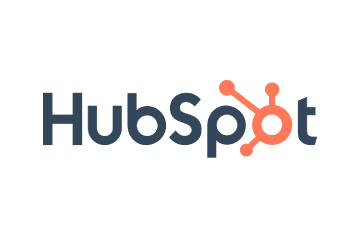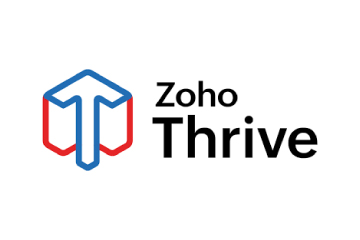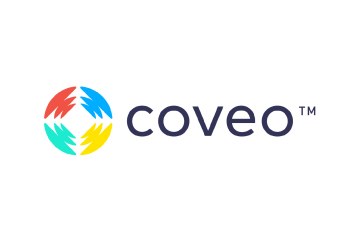Loyalty programs have been a key component of customer retention strategies, providing rewards and incentives to encourage repeat business. However, in today’s saturated market, it’s important to question whether these programs are delivering on their promises or if they’re falling short of expectations.
The Current State of Loyalty Programs
Despite the increasing number of loyalty programs, many struggle to remain effective. According to a study by Accenture, 77% of consumers are now less loyal than they were three years ago. This indicates that traditional loyalty programs may no longer appeal to today’s consumers.”
Why Loyalty Programs Are Falling Short
Several factors contribute to the waning impact of loyalty programs:
- Lack of Personalisation: Many loyalty programs offer generic rewards that fail to address individual customer preferences. A report by Bond Brand Loyalty revealed that 79% of consumers are likelier to engage with a loyalty program that offers personalised rewards.
- Complexity and Inconvenience: Overly complicated reward structures and cumbersome redemption processes can deter customers from participating. Simplifying these aspects is crucial to maintaining engagement.
- Inadequate Value: Customers are unlikely to stay loyal if the rewards do not provide meaningful value. According to Forrester, 70% of consumers have abandoned loyalty programs because the rewards were not compelling enough.
The Path Forward: Revitalising Loyalty Programs
To breathe new life into loyalty programs, brands must innovate and adapt to changing consumer expectations. Here’s how:
- Embrace Personalisation
Consumers crave personalised experiences. By leveraging data analytics and AI, brands can offer tailored rewards that reflect individual preferences and behaviours. For example, Starbucks uses data from its app to provide personalised offers and recommendations, enhancing customer engagement and satisfaction.
- Simplify the Experience
A loyalty program should be easy to understand and use. Simplifying the enrollment process, straightforward point accumulation, and offering easy redemption options can significantly boost participation. Amazon Prime’s straightforward benefits, such as free shipping and exclusive deals, exemplify a successful, user-friendly loyalty program.
- Enhance Value Proposition
Rewards must be meaningful and valuable to customers. This can include exclusive access to events, early product releases, or unique experiences that go beyond discounts and points. Sephora’s Beauty Insider program, for instance, offers exclusive experiences and early access to sales, making it highly attractive to its members.
- Foster Emotional Connections
Loyalty isn’t just about transactions; it’s about building emotional connections. Brands should focus on creating experiences that resonate emotionally with customers. This can be achieved through storytelling, community-building activities, and personalised recognition of loyal customers.
- Integrate Technology
Technology can enhance the loyalty experience by making it more seamless and engaging. Mobile apps, for instance, can offer real-time updates on points, personalised offers, and easy redemption options. Gamification elements, such as challenges and badges, can increase engagement and make the program more enjoyable.
The Future of Loyalty Programs
Loyalty programs aren’t inherently failing, but they need to evolve. By addressing current shortcomings and embracing personalisation, simplicity, value, emotional connections, and technology, brands can revitalise their loyalty programs and re-engage customers. The future of loyalty lies in creating meaningful, personalised experiences that resonate with consumers on a deeper level, ensuring they return and become advocates for the brand.
Data Privacy Concerns
As personalisation becomes a cornerstone of modern loyalty programs, the collection and use of customer data raise significant privacy concerns. Consumers are increasingly aware of and sensitive to how their data is used. Brands must navigate this landscape carefully, ensuring transparent data practices and robust security measures. Balancing personalisation with privacy will be crucial to maintaining trust and loyalty.
Implementation Costs
Revamping loyalty programs to integrate advanced technologies and personalised experiences can be expensive. Small and medium-sized enterprises (SMEs) might struggle to allocate the necessary resources for these upgrades. To address this, brands need to consider scalable and cost-effective solutions that allow incremental improvements rather than complete overhauls.
Customer Fatigue
In a market saturated with loyalty programs, customers can quickly become fatigued by too many reward schemes vying for their attention. Differentiating a loyalty program in such an environment requires innovative thinking and a deep understanding of customer desires. Brands must focus on unique value propositions that set their programs apart and provide genuine customer value.
Measuring Effectiveness
Determining the success of loyalty programs takes a lot of work. Brands must establish clear metrics and continuously monitor and adjust their strategies based on performance data. This requires ongoing assessment and refinement, ensuring the program evolves in line with customer needs and market trends.
The Path Forward
Despite these challenges, the evolution of loyalty programs presents significant opportunities. By leveraging data analytics responsibly, simplifying the user experience, offering meaningful rewards, and building emotional connections, brands can create loyalty programs that stand out in a crowded market. Integrating advanced technologies can further enhance these programs, making them more dynamic and responsive to customer needs.
So, while loyalty programs face several hurdles, their potential to drive customer engagement and retention remains strong. Brands that can navigate these challenges and innovate will be well-positioned to foster deep, lasting customer loyalty. The future of loyalty programs lies in a balanced approach that combines the best of personalisation, simplicity, value, emotional connection, and technology, creating a truly holistic and engaging customer experience.
Steps for a Successful Loyalty Program Evolution:
- Turn Loyalty into a Lifestyle: Integrate your loyalty program into your customers’ daily lives. Create an ecosystem where your brand’s presence enhances their lifestyle, offering benefits beyond purchases, such as health, wellness, or educational perks that resonate deeply with their values.
- Create Loyalty Tribes: Foster a sense of community by building loyalty tribes. Encourage customers to connect through exclusive events, social media groups, or brand ambassador programs. This creates a strong emotional bond and a sense of belonging that transcends mere transactions.
- Surprise and Delight: Beyond predictable rewards by incorporating unexpected, delightful experiences. Send personalised gifts on customers’ milestones or create spontaneous, exclusive events. This element of surprise keeps the loyalty program exciting and emotionally engaging.
- Leverage Immersive Technologies: Use augmented reality (AR) and virtual reality (VR) to create immersive loyalty experiences. Imagine a virtual store where customers can explore and interact with products or exclusive virtual events that make them feel special and connected to your brand.
- Gamify with Purpose: Instead of simple points and badges, design gamification elements that tie into a larger purpose. Create challenges and missions that align with social causes or personal development, making the loyalty experience rewarding but also meaningful and impactful.
As we navigate the evolving landscape of customer loyalty, it’s clear that traditional programs need a radical overhaul. The future lies in creating deeply personalised, emotionally resonant experiences that seamlessly integrate into customers’ lives. By turning loyalty programs into lifestyle enhancements, fostering community through loyalty tribes, and leveraging cutting-edge technologies like AR and VR, brands can transcend the transactional and build truly meaningful connections. It’s not just about points and rewards—it’s about making customers feel genuinely valued and part of something bigger. This is the path to fostering unwavering loyalty and transforming customers into lifelong advocates.



















 Amplitude is a product analytics platform, enabling businesses to track visitors with the help of collaborative analytics. The platform leverages the capabilities of
Amplitude is a product analytics platform, enabling businesses to track visitors with the help of collaborative analytics. The platform leverages the capabilities of 




 Zoho Social, a part of Zoho’s suite of 50+ products, is a comprehensive social media management platform for businesses and agencies. The Zoho Social dashboard includes a robust set of features, such as Publishing Calendar, Bulk Scheduler, and Approval Management to offer businesses all the essential social media publishing tools. Its monitoring tools help enterprises track and respond to relevant social conversations.
Zoho Social, a part of Zoho’s suite of 50+ products, is a comprehensive social media management platform for businesses and agencies. The Zoho Social dashboard includes a robust set of features, such as Publishing Calendar, Bulk Scheduler, and Approval Management to offer businesses all the essential social media publishing tools. Its monitoring tools help enterprises track and respond to relevant social conversations.

 Microsoft Dynamics 365 represents a robust cloud-based CRM solution with features such as pipeline assessment, relationship analytics, and conversational intelligence. It utilises AI-powered insights to provide actionable intelligence via predictive analytics, lead scoring, sentiment analysis, etc. Currently, Microsoft operates in 190 countries and is made up of more than 220,000 employees worldwide.
Microsoft Dynamics 365 represents a robust cloud-based CRM solution with features such as pipeline assessment, relationship analytics, and conversational intelligence. It utilises AI-powered insights to provide actionable intelligence via predictive analytics, lead scoring, sentiment analysis, etc. Currently, Microsoft operates in 190 countries and is made up of more than 220,000 employees worldwide.

 HubSpot is an inbound marketing, sales, and customer service software provider, offering robust CRM and automation solutions. Some of its products include Marketing Hub, Sales Hub, Operations Hub, Content Hub, Commerce Hub, Marketing Analytics and Dashboard Software. Guided by its inbound methodology, HubSpot enables companies to prioritise innovation and customer success.
HubSpot is an inbound marketing, sales, and customer service software provider, offering robust CRM and automation solutions. Some of its products include Marketing Hub, Sales Hub, Operations Hub, Content Hub, Commerce Hub, Marketing Analytics and Dashboard Software. Guided by its inbound methodology, HubSpot enables companies to prioritise innovation and customer success.
 Monday.com is a project management software company, offering a cloud-based platform that enables businesses
Monday.com is a project management software company, offering a cloud-based platform that enables businesses  Headquartered in San Mateo, California, Freshworks is a global AI-powered business software provider. Its tech stack includes a scalable and comprehensive suite for IT, customer support, sales, and marketing teams, ensuring value for immediate business impact. Its product portfolio includes Customer Service Suite, Freshdesk, Freshchat, Freshcaller, Freshsuccess, and Freshservice. Freshservice for Business Teams has helped several global organisations to enhance their operational efficiency.
Headquartered in San Mateo, California, Freshworks is a global AI-powered business software provider. Its tech stack includes a scalable and comprehensive suite for IT, customer support, sales, and marketing teams, ensuring value for immediate business impact. Its product portfolio includes Customer Service Suite, Freshdesk, Freshchat, Freshcaller, Freshsuccess, and Freshservice. Freshservice for Business Teams has helped several global organisations to enhance their operational efficiency.
 Talkdesk offers an innovative AI-powered customer-centric tech stack to its global partners. The company provides generative AI integrations, delivering industry-specific solutions to its customers. Talkdesk CX Cloud and Industry Experience Clouds utilise modern machine learning and language models to enhance contact centre efficiency and client satisfaction.
Talkdesk offers an innovative AI-powered customer-centric tech stack to its global partners. The company provides generative AI integrations, delivering industry-specific solutions to its customers. Talkdesk CX Cloud and Industry Experience Clouds utilise modern machine learning and language models to enhance contact centre efficiency and client satisfaction.




 The company offers comprehensive cloud-based solutions, such as Microsoft Dynamics 365, Gaming Consoles, Microsoft Advertising, Copilot, among other things, to help organisations offer enhanced CX and ROI. Its generative-AI-powered speech and voice recognition solutions,such as Cortana and Azure Speech Services empowers developers to build intelligent applications.
The company offers comprehensive cloud-based solutions, such as Microsoft Dynamics 365, Gaming Consoles, Microsoft Advertising, Copilot, among other things, to help organisations offer enhanced CX and ROI. Its generative-AI-powered speech and voice recognition solutions,such as Cortana and Azure Speech Services empowers developers to build intelligent applications. IBM is a global hybrid cloud and AI-powered
IBM is a global hybrid cloud and AI-powered  Uniphore is an enterprise-class, AI-native company that was incubated in 2008. Its enterprise-class multimodal AI and data platform unifies all elements of voice, video, text and data by leveraging Generative AI, Knowledge AI, Emotion AI and workflow automation. Some of its products include U-Self Serve, U-Assist, U-Capture, and U-Analyze. Its Q for Sale is a conversational intelligence software that guides revenue teams with AI-powered insights, offering clarity on how to effectively keep prospects engaged.
Uniphore is an enterprise-class, AI-native company that was incubated in 2008. Its enterprise-class multimodal AI and data platform unifies all elements of voice, video, text and data by leveraging Generative AI, Knowledge AI, Emotion AI and workflow automation. Some of its products include U-Self Serve, U-Assist, U-Capture, and U-Analyze. Its Q for Sale is a conversational intelligence software that guides revenue teams with AI-powered insights, offering clarity on how to effectively keep prospects engaged. Google Cloud accelerates every organisation’s ability to digitally transform its business. Its enterprise-grade solutions leverage modern technology to solve the most criticial business problems
Google Cloud accelerates every organisation’s ability to digitally transform its business. Its enterprise-grade solutions leverage modern technology to solve the most criticial business problems  8×8 offers out-of-the-box contact centre solutions, assisting all-size businesses to efficiently meet customer needs and preferences. It offers custom CRM integrations support and integrates effortlessly with third-party CRMs like Salesforce, Microsoft Dynamics, Zendesk, and more. Offering global support in all time zones & development teams in 5 continents, its patented geo-routing solution ensures consistent voice quality.
8×8 offers out-of-the-box contact centre solutions, assisting all-size businesses to efficiently meet customer needs and preferences. It offers custom CRM integrations support and integrates effortlessly with third-party CRMs like Salesforce, Microsoft Dynamics, Zendesk, and more. Offering global support in all time zones & development teams in 5 continents, its patented geo-routing solution ensures consistent voice quality. Sprinklr is a comprehensive enterprise software company for all customer-focused functions. With advanced AI, Sprinklr’s unified customer experience management (Unified-CXM) platform lets organisations offer human experiences to every customer, every time, across any modern channel.
Sprinklr is a comprehensive enterprise software company for all customer-focused functions. With advanced AI, Sprinklr’s unified customer experience management (Unified-CXM) platform lets organisations offer human experiences to every customer, every time, across any modern channel.


 Upland offers a comprehensive suite of contact centre and customer service solutions with products including InGenius, Panviva, Rant & Rave, and RightAnswers. InGenius enables organisations to connect their existing phone system with CRM, further enhancing agent productivity. Panviva provides compliant and omnichannel capabilities for highly regulated industries. Whereas, Rant & Rave, and RightAnswers are its AI-powered solutions,
Upland offers a comprehensive suite of contact centre and customer service solutions with products including InGenius, Panviva, Rant & Rave, and RightAnswers. InGenius enables organisations to connect their existing phone system with CRM, further enhancing agent productivity. Panviva provides compliant and omnichannel capabilities for highly regulated industries. Whereas, Rant & Rave, and RightAnswers are its AI-powered solutions, 


 Hootsuite, headquartered in Vancouver, is a social media management platform that streamlines the process of managing multiple social media accounts. Some of its core offerings include social media content planning and publishing, audience engagement tools, analytics and social advertising. Its easy-to-integrate capabilities help marketing teams to schedule and publish social media posts efficiently.
Hootsuite, headquartered in Vancouver, is a social media management platform that streamlines the process of managing multiple social media accounts. Some of its core offerings include social media content planning and publishing, audience engagement tools, analytics and social advertising. Its easy-to-integrate capabilities help marketing teams to schedule and publish social media posts efficiently.

 Brandwatch enables businesses to build and scale the optimal strategy for their clients with intuitive, use-case-focused tools that are easy and quick to master. Bringing together consumer intelligence and social media management, the company helps its users react to the trends that matter, collaborate on data-driven content, shield the brand from threats and manage all the social media channels at scale.
Brandwatch enables businesses to build and scale the optimal strategy for their clients with intuitive, use-case-focused tools that are easy and quick to master. Bringing together consumer intelligence and social media management, the company helps its users react to the trends that matter, collaborate on data-driven content, shield the brand from threats and manage all the social media channels at scale.


 Adobe Experience Cloud offers a comprehensive set of applications, capabilities, and services specifically designed to address day-to-day requirement for personalised customer experiences at scale. Its platform helps play an essential role in managing different digital content or assets to improve customer happiness. Its easy-to-optimise content gives users appropriate marketing streams, ensuring product awareness.
Adobe Experience Cloud offers a comprehensive set of applications, capabilities, and services specifically designed to address day-to-day requirement for personalised customer experiences at scale. Its platform helps play an essential role in managing different digital content or assets to improve customer happiness. Its easy-to-optimise content gives users appropriate marketing streams, ensuring product awareness. Salesforce-owned Tableau is an AI-powered analytics and business intelligence platform, offering the breadth and depth of capabilities that serve the requirements of global enterprises in a seamless, integrated experience. Marketers can utilise generative AI models, AI-powered predictions, natural language querying, and recommendationsons.
Salesforce-owned Tableau is an AI-powered analytics and business intelligence platform, offering the breadth and depth of capabilities that serve the requirements of global enterprises in a seamless, integrated experience. Marketers can utilise generative AI models, AI-powered predictions, natural language querying, and recommendationsons. Contentsquare is a cloud-based digital experience analytics platform, helping brands track billions of digital interactions, and turn those digital
Contentsquare is a cloud-based digital experience analytics platform, helping brands track billions of digital interactions, and turn those digital 


 Zoho Corporation offers innovative and tailored software to help leaders grow their business. Zoho’s 55+ products aid sales and marketing, support and collaboration, finance, and recruitment requirements. Its customer analytics capabilities come with a conversational feature, Ask Zia. It enables users to ask questions and get insights in the form of reports and widgets in real-time.
Zoho Corporation offers innovative and tailored software to help leaders grow their business. Zoho’s 55+ products aid sales and marketing, support and collaboration, finance, and recruitment requirements. Its customer analytics capabilities come with a conversational feature, Ask Zia. It enables users to ask questions and get insights in the form of reports and widgets in real-time. Fullstory is a behavioural data platform, helping C-suite leaders make informed decisions by injecting digital behavioural data into its analytics stack. Its patented technology uncovers the power of quality behavioural data at scale, transforming every digital visit into actionable insights. Enterprises can increase funnel conversion and identify their highest-value customers effortlessly.
Fullstory is a behavioural data platform, helping C-suite leaders make informed decisions by injecting digital behavioural data into its analytics stack. Its patented technology uncovers the power of quality behavioural data at scale, transforming every digital visit into actionable insights. Enterprises can increase funnel conversion and identify their highest-value customers effortlessly.

 Started in 2005 in a Sweden-based small town, Norrköping, Voyado offers a customer experience cloud platform that includes a customer loyalty management system. This platform helps businesses design and implement customer loyalty programs, track customer
Started in 2005 in a Sweden-based small town, Norrköping, Voyado offers a customer experience cloud platform that includes a customer loyalty management system. This platform helps businesses design and implement customer loyalty programs, track customer 



 TapMango provides a comprehensive, customisable, flexible and feature-rich customer loyalty program. The loyalty tools include an integrated suite of customised consumer-facing technology, easy-to-use merchant tools, and automation algorithms, all aimed at enhancing customer experience. Adaptable to any industry, TapMango’s platform helps merchants compete with larger chains, converting customer one-time purchases into profitable spending habits.
TapMango provides a comprehensive, customisable, flexible and feature-rich customer loyalty program. The loyalty tools include an integrated suite of customised consumer-facing technology, easy-to-use merchant tools, and automation algorithms, all aimed at enhancing customer experience. Adaptable to any industry, TapMango’s platform helps merchants compete with larger chains, converting customer one-time purchases into profitable spending habits.






 Adobe Experience Cloud offers a comprehensive set of applications, capabilities, and services specifically designed to address day-to-day requirements for personalised customer experiences at scale. Its innovative platform has played an essential role in managing different digital content or assets, to improve customer happiness or satisfaction. Some of its products include Adobe Gen Studio, Experience Manager Sites, Real-time CDP, and Marketo Engage.
Adobe Experience Cloud offers a comprehensive set of applications, capabilities, and services specifically designed to address day-to-day requirements for personalised customer experiences at scale. Its innovative platform has played an essential role in managing different digital content or assets, to improve customer happiness or satisfaction. Some of its products include Adobe Gen Studio, Experience Manager Sites, Real-time CDP, and Marketo Engage.

